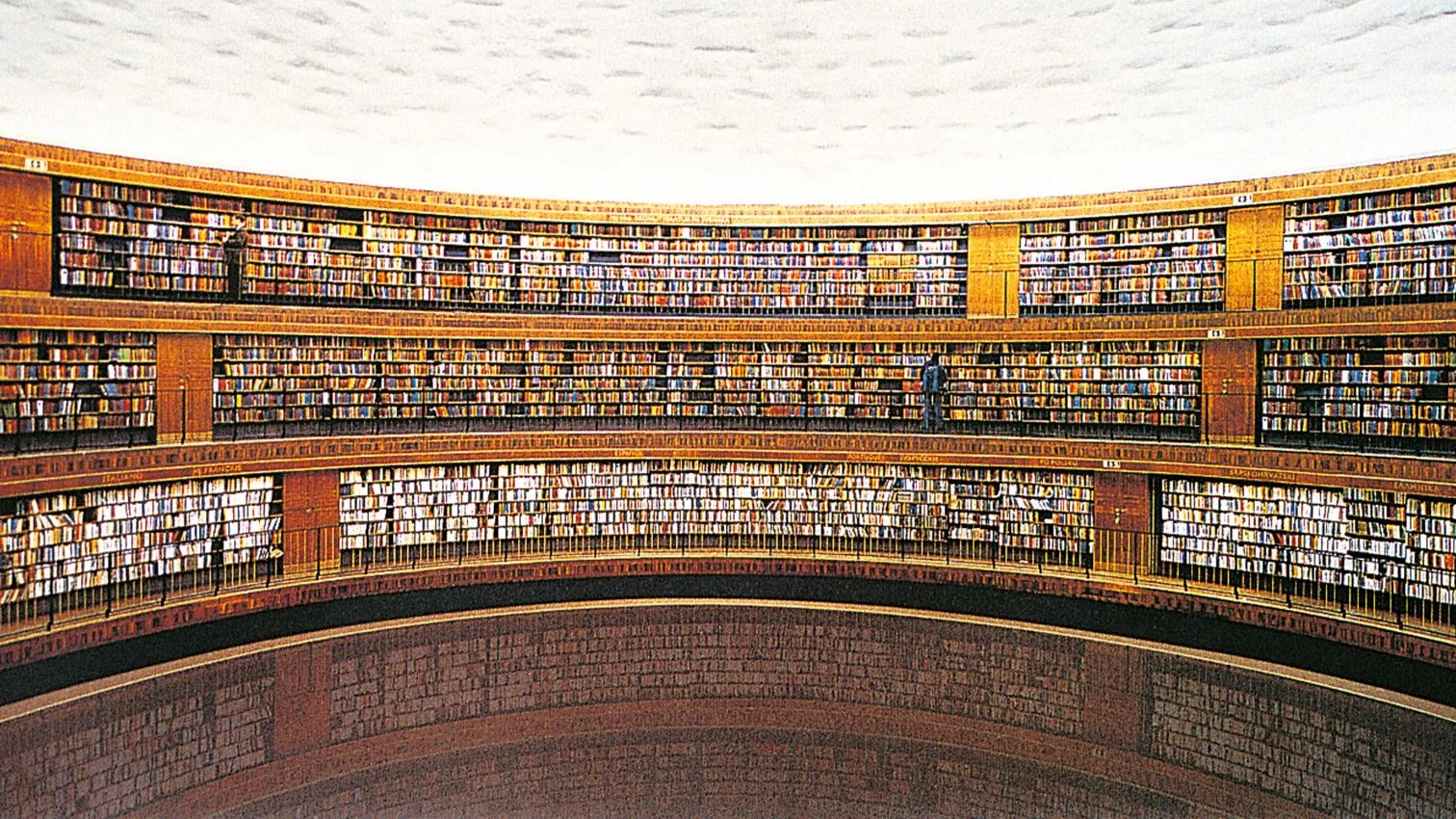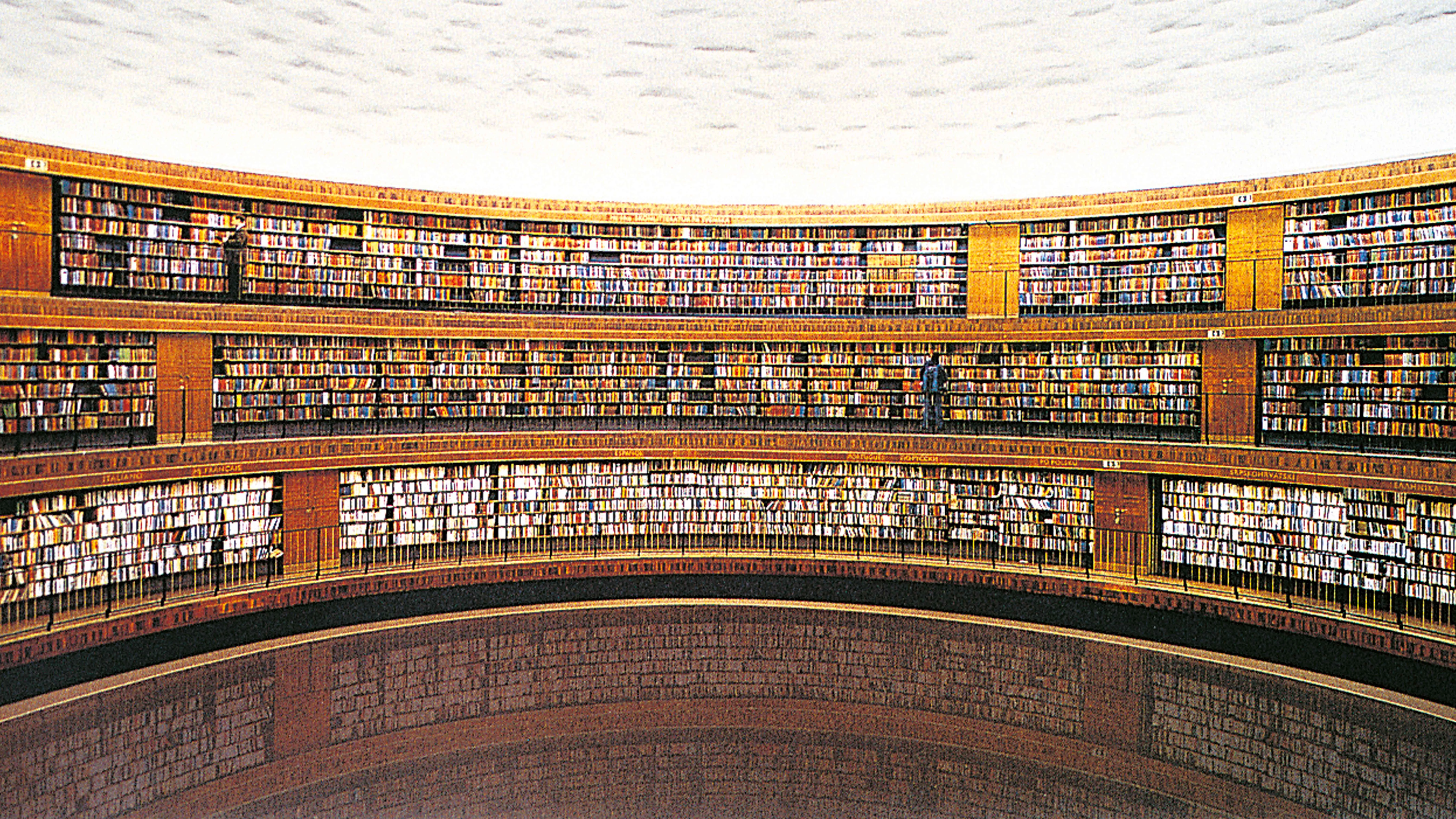
Andreas Gursky, Bibliothek, 1999
They have to be, because today’s bullring has no space for the laughter of Democritus or the tears of Heraclitus: our sensitivity is closer to the shy smile of Menippus or the bitter lucidity of Aesop, the two skeptical models with which Velázquez replaced the laughing and crying of the classical philosophers. And there is even less space for the opposition between the cheerful sky of art and the painful ground of technique, which Le Corbusier proposed in 1942 and corrected in 1960 with a second version of his diagram about the relationship between architects and engineers. Faced with the collapse of analytical systems, historiographic methods and stylistic genealogies, perhaps it is only possible to describe them with skeptical visual irony: the modular and geometric matrixes of formal continuity proposed by Colin Rowe; the equivocal bubbles of the evolutionary interpretations of emergence, growth and decline, criticized by Bruno Zevi; the leafy trees of links laid out by Alfred Barr; or the wavy landscape of trends made up by Charles Jencks. In the end, the territory of architecture today looks more like a supermarket than a library, and inside it we move guided only by the winged eye of Alberti and his Ciceronian motto: Quid tum, and then what?...[+]






